Anime is a world filled with dynamic and multifaceted characters, and female anime protagonists have stood out for their complexity, strength, and emotional depth. These women have shaped the anime landscape, and their stories transcend the medium, inspiring audiences worldwide. Whether they’re fighting for justice, exploring deep existential questions, or navigating intricate relationships, these characters are unforgettable. In this ultimate guide, we’ll explore the top 20 female anime protagonists, providing an in-depth look at their personalities, character arcs, and the impact they’ve had on both their respective anime and the broader world of storytelling.
1. Usagi Tsukino (Sailor Moon) – Sailor Moon
Introduction to Usagi’s Journey Usagi Tsukino, the clumsy and often crybaby protagonist of Sailor Moon, might not appear to be the typical hero at first glance. As the magical warrior Sailor Moon, Usagi’s character arc is defined by growth, inner strength, and the ability to overcome personal struggles. She starts as a naive, self-centered girl who constantly gets distracted from her duties, yet she transforms into a powerful and caring leader who defends the Earth from evil forces.

Character Strengths and Vulnerabilities What makes Usagi so unique is her vulnerability. Unlike many anime heroines, she doesn’t start out as a natural-born leader or fighter. Her journey of self-discovery, learning to protect her loved ones, and finding the courage to rise to her destiny makes her a relatable and inspiring character. Despite being frail at times, Usagi’s emotional depth—her love for her friends and family, her moments of doubt, and her unwavering determination—make her a beacon of hope and resilience.
Impact on Anime and Pop Culture Sailor Moon introduced a new era for anime and played a significant role in popularizing the magical girl genre. Usagi’s character became an empowering figure for young viewers worldwide, teaching lessons of friendship, love, and the importance of self-belief. She remains an icon, and her legacy is felt in numerous subsequent anime that feature strong, female-led narratives.
2. Nausicaä – Nausicaä of the Valley of the Wind
The Essence of Nausicaä’s Character Nausicaä, the princess of the Valley of the Wind, is a visionary character who epitomizes the power of empathy and environmental stewardship. A gifted pilot and a compassionate leader, she is one of Studio Ghibli’s most profound characters. Nausicaä’s deep love for the natural world and her willingness to understand and heal the toxic environment surrounding her people sets her apart as an unlikely hero.

Character Growth and Philosophical Themes What makes Nausicaä stand out is her philosophical approach to conflict. While others are consumed by the desire for war, Nausicaä seeks peace and understanding, choosing to listen and empathize rather than resorting to violence. Throughout the film, she faces emotional and physical challenges that test her resolve, and it is through her unwavering commitment to peace that she becomes a true hero. Her growth is not just in terms of skill but also in how she learns to understand the delicate balance between mankind and nature.
Legacy and Influence Nausicaä of the Valley of the Wind has influenced countless works within the anime and film industry. Nausicaä’s leadership and environmental concerns were ahead of their time, and her character continues to inspire real-world environmental movements. The film’s success also helped to solidify Studio Ghibli as one of the most influential animation studios in the world.
3. Motoko Kusanagi – Ghost in the Shell
The Complexity of Major Motoko Kusanagi Major Motoko Kusanagi is a character whose complexity transcends the traditional boundaries of anime. As a cyborg with a human mind, she grapples with existential questions about identity, consciousness, and the soul. In Ghost in the Shell, Motoko is not just a skilled operative in a futuristic world but also a deeply philosophical character who questions what it means to be human.
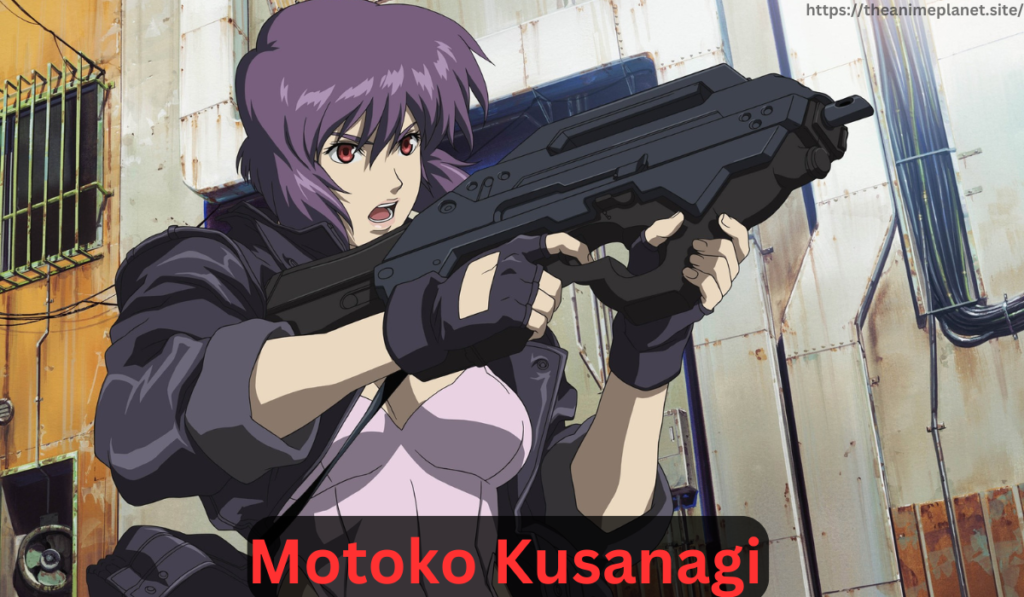
Character Traits and Evolution Motoko’s calm demeanor and tactical brilliance make her an ideal leader in the chaotic cyberpunk world she inhabits. She is a woman of few words, preferring action over discussion, but her internal monologues often reveal her struggles with the loss of her humanity. Her journey is one of seeking answers to life’s bigger questions, all while dealing with political and technological corruption in a dystopian society.
Cultural Significance Motoko’s impact on both anime and pop culture is immense. As one of the earliest representations of a strong, female lead in the cyberpunk genre, she set the stage for many characters who followed in her footsteps. Her character has influenced not only anime but also Hollywood films like The Matrix and Blade Runner 2049. Motoko continues to be a symbol of empowerment for women in tech and a touchstone for philosophical debates about technology’s role in society.
4. Mikasa Ackerman – Attack on Titan
The Unyielding Strength of Mikasa Mikasa Ackerman is one of the most formidable fighters in the Attack on Titan universe. Her strength, both physical and emotional, is what defines her as one of the most iconic female protagonists in anime. As Eren Yeager’s adoptive sister, Mikasa’s loyalty to him drives much of her motivations, but she also develops her sense of self as the series progresses.

Psychological Depth and Character Growth What makes Mikasa’s character so compelling is her emotional depth. Behind her stoic and almost superhuman exterior lies a woman struggling with loss, trauma, and a desire to protect the ones she loves. Her evolution is marked by moments of self-doubt, as she questions her purpose and the morality of her actions in a brutal world. Mikasa’s growth comes from learning to balance her loyalty to Eren with her need to carve out her identity, especially as the world around her falls into chaos.
Enduring Popularity and Legacy Mikasa’s strength and emotional complexity have made her a fan favorite in Attack on Titan. She’s a rare example of a character who can simultaneously embody the traits of both a fierce warrior and a deeply empathetic individual. Her impact is felt throughout the anime community, and she remains one of the defining characters of modern anime.
5. Homura Akemi – Puella Magi Madoka Magica
The Tragic Heroine Homura Akemi’s character arc in Puella Magi Madoka Magica is one of the most heartbreaking and complex in anime. Initially introduced as a seemingly cold and mysterious figure, Homura’s backstory is slowly revealed, showing her deep emotional struggles and the sacrifices she’s made to protect her friends, especially Madoka.

Themes of Sacrifice and Love What sets Homura apart is the emotional weight of her journey. Homura repeatedly relives painful timelines, trying desperately to change the future and protect Madoka from a tragic fate. Her journey is a relentless cycle of love, sacrifice, and frustration, and as the series progresses, viewers witness her transformation from a vulnerable girl into a battle-hardened warrior.
Impact on the Genre Homura’s character is a deconstruction of the typical magical girl archetype. While she starts off as a seemingly traditional heroine, her role becomes far more complicated as she faces the true nature of her mission. Homura has become a symbol of both tragic love and the darker side of heroism, making her a standout character in the magical girl genre and anime as a whole.
6. Asuka Langley Soryu – Neon Genesis Evangelion
Introduction to Asuka’s Personality and Role Asuka Langley Soryu, one of the central characters in Neon Genesis Evangelion, is often regarded as one of the most complex and multifaceted characters in anime. Initially introduced as an overconfident and brash 14-year-old Eva pilot, Asuka quickly asserts herself as a dominant force in the series. Her fiery attitude, combined with her prodigious talent, make her a compelling character from the outset. However, as the series delves deeper into her psyche, viewers are confronted with a character who is hiding her deep insecurities and unresolved trauma beneath a tough exterior.

Psychological Complexity and Inner Struggles Asuka’s character is a prime example of how anime can explore psychological depth. She projects an air of superiority and self-reliance, but beneath this facade lies a vulnerable young woman struggling with feelings of loneliness and abandonment. Her tragic backstory—marked by a tumultuous relationship with her mother, the trauma of losing her as a child, and a profound sense of emotional neglect—serves as the foundation of her character. Asuka’s need for validation and her desperate desire to be recognized for her strength create moments of intense emotional conflict throughout Neon Genesis Evangelion.
Key Moments and Character Growth One of the most iconic and devastating moments in Evangelion occurs when Asuka is unable to pilot her Eva during a critical battle, leading to a breakdown that reveals her fragility. This moment is a turning point for Asuka, as it shows the vulnerability of a character who has spent the majority of the series building walls around her emotions. Asuka’s relationship with Shinji, marked by both rivalry and emotional connection, further complicates her growth. The series paints a picture of Asuka’s internal battle between her desire for control and the fear of being truly understood, making her one of anime’s most tragic yet compelling characters.
Legacy and Influence Asuka’s influence on anime characters who followed her is profound. Her characterization as a strong, complex, and emotionally fragile protagonist has become a template for future female characters in anime. While many anime heroines might be characterized by clear-cut heroism or strength, Asuka represents a more nuanced portrayal of what it means to be both a fighter and a human with deep vulnerabilities. Her character is not just a product of her environment, but a reflection of the struggles many people face in reconciling strength with vulnerability.
7. Kagome Higurashi – Inuyasha
Introduction to Kagome’s Role Kagome Higurashi’s role in Inuyasha marks her as one of anime’s most beloved female protagonists. Kagome, a modern-day high school student, is unexpectedly transported to the Sengoku period of Japan, where she becomes entangled in the search for the Shikon Jewel. Although initially hesitant about her new life, Kagome’s character evolves significantly as she becomes a key player in the quest for the jewel, proving to be both brave and resourceful.

Growth from Ordinary Girl to Hero At the start of Inuyasha, Kagome is portrayed as a normal girl with a somewhat headstrong but kind personality. However, her journey through the Sengoku period pushes her to grow beyond her ordinary life, and she rises to the challenges presented by the unpredictable world around her. Despite her initial lack of combat skills, Kagome uses her intelligence and determination to hold her own alongside powerful warriors like Inuyasha and Miroku. Her transformation from an unsure schoolgirl to a courageous and capable heroine highlights her inner strength and resilience.
The Power of Love and Loyalty One of Kagome’s most defining traits is her unwavering loyalty and love, particularly her deepening relationship with Inuyasha. As the series unfolds, Kagome becomes not only a key figure in the battle against dark forces but also a pillar of emotional support for her companions. Her compassionate nature allows her to form meaningful relationships with those around her, and her romantic connection with Inuyasha adds another layer of emotional depth to her character. Her ability to remain grounded in love and compassion, even in the face of overwhelming adversity, makes her an unforgettable protagonist.
Cultural Impact and Legacy Kagome is a quintessential example of the “strong female lead” in anime, where her strength is not just physical but emotional and intellectual. She is a relatable character whose evolution from a confused teenager to a heroine with a clear purpose resonates with many fans. Inuyasha continues to be a beloved series, and Kagome’s role as the central female protagonist remains a defining factor in the show’s success.
8. Nami – One Piece
Nami’s Role in the Straw Hat Pirates Nami, the navigator of the Straw Hat Pirates, is one of One Piece‘s most dynamic and beloved characters. Her early introduction as a cunning and resourceful thief highlights her intelligence and sharp wit, but over time, her character evolves into a symbol of strength, loyalty, and leadership within the crew. Nami’s journey is defined by her ability to outsmart adversaries and her growing role as a trusted leader in the crew’s many adventures.

Emotional Depth and Character Development Nami’s backstory is a heart-wrenching tale of loss and betrayal, as she is forced to work with the villainous Arlong in order to protect her village. Her eventual rebellion against Arlong and her decision to join Luffy and the Straw Hat Pirates marks the beginning of her personal growth. Throughout the series, Nami’s relationship with her fellow crew members becomes increasingly meaningful, particularly with Luffy, who shows her unconditional loyalty. Nami’s emotional arc revolves around overcoming her past and finding a family with the Straw Hat Pirates, illustrating how far she’s come from the independent, self-serving thief she once was.
Influence on Female Protagonists in Shonen Nami’s role as a central female character in a predominantly male-led series has had a lasting impact on the portrayal of women in shonen anime. She challenges the conventional trope of the female sidekick by becoming an essential member of the crew whose contributions go beyond mere support. Nami’s intelligence, independence, and emotional growth have made her one of One Piece‘s most popular characters and a role model for young viewers.
9. Erza Scarlet – Fairy Tail
Erza’s Strength and Leadership Erza Scarlet, known for her incredible strength and versatility in battle, is one of Fairy Tail‘s standout characters. As a S-Class mage capable of using her Requip magic to change armor and weapons at will, Erza is a force to be reckoned with in combat. However, her true strength lies not just in her physical abilities but in her leadership, her unwavering loyalty to her friends, and her ability to inspire others.
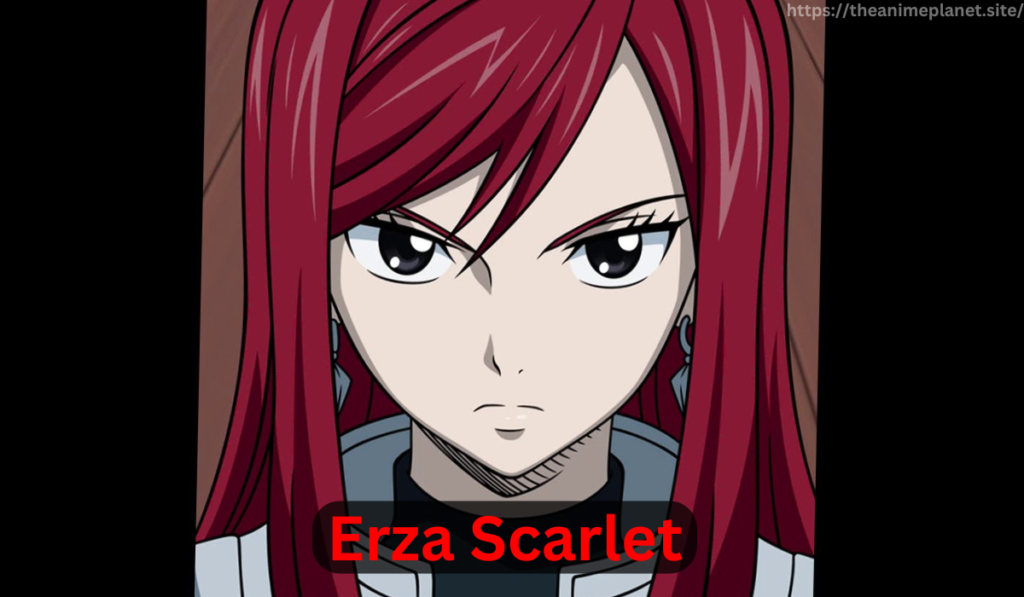
The Emotional Layers Behind Erza’s Strength Erza’s backstory is a tragic one—she was raised as a slave in a dangerous and abusive environment before being rescued by her fellow guild members. Her experiences have shaped her into the strong, dependable woman she is, but they also left her with emotional scars that make her wary of forming deep relationships at first. Over time, Erza learns to embrace her vulnerability and allow others to become part of her family. Her emotional journey, combined with her strength and leadership, makes her one of anime’s most beloved female protagonists.
Erza’s Role in Defining Female Strength Erza is a character who challenges traditional gender roles in shonen anime. While the genre often focuses on male protagonists, Erza shows that women can be just as strong, skilled, and complex as their male counterparts. Her character serves as an inspiration for viewers, particularly women, who see in her the power of resilience and the importance of friendship and loyalty.
10. Yuno Gasai – Future Diary (Mirai Nikki)
The Unpredictable Love of Yuno Gasai Yuno Gasai is a character who defies conventional understanding. At first glance, she might appear as just another yandere archetype—a character whose obsessive love leads her to extreme and violent actions. However, Yuno’s character in Future Diary is far more nuanced and complex than that. Her love for Yukiteru, while obsessive, is rooted in her traumatic past and her desperate desire to protect him at all costs.

Yuno’s Psychological Complexity Yuno’s journey is marked by a descent into madness as she becomes entangled in the deadly survival game. Her actions are driven by a mix of love, fear, and a desire for control over her own fate. As the series progresses, Yuno’s motivations become clearer, and viewers are forced to question whether her actions are driven by true love or by a need to find stability in a chaotic world. The tension between these two forces makes Yuno one of anime’s most unforgettable and compelling characters.
Impact on the Yandere Archetype Yuno’s character has had a profound impact on the yandere archetype in anime, turning it from a mere trope into a deeply complex and multifaceted character. Her ability to evoke both sympathy and fear in viewers has made her a standout character in the psychological thriller genre, and she continues to be a fan favorite for her complexity and unpredictability.
11. Saber (Artoria Pendragon) – Fate/stay night
Introduction to Saber’s Noble Identity Saber, also known as Artoria Pendragon, is one of the central characters in the Fate series, particularly Fate/stay night. As the embodiment of King Arthur, Saber is a heroic spirit who finds herself summoned to the modern world to participate in the Holy Grail War. With a strong sense of honor and duty, Saber is a character who strives to uphold her ideals, even in a world that has little regard for the ancient concepts of chivalry.
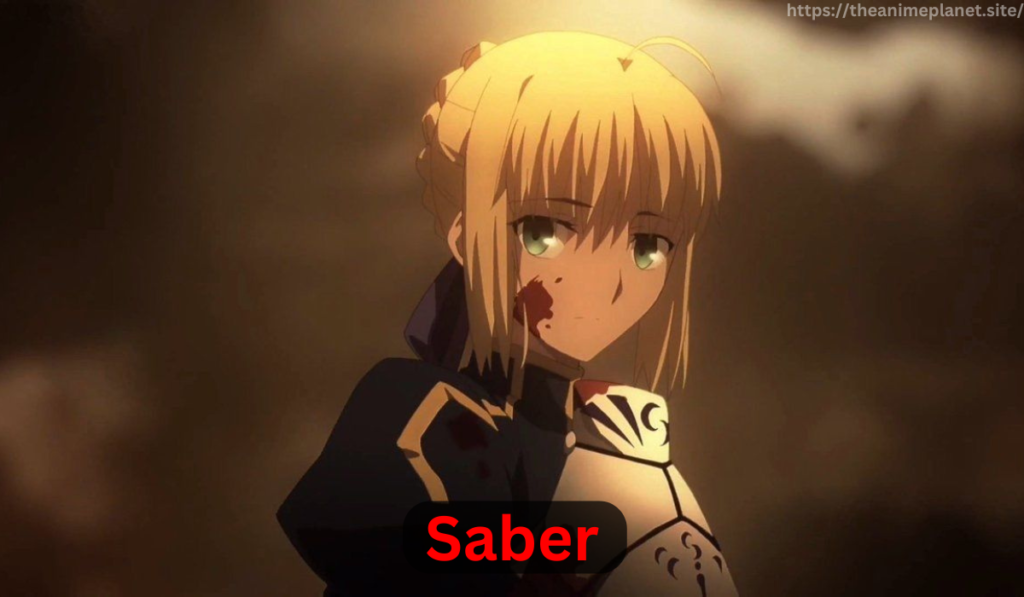
Saber’s Struggle with Her Identity Saber’s greatest internal conflict revolves around her identity as King Arthur. She struggles with the heavy burden of her past, specifically her regret over her decisions as king. Her sense of duty and her desire to protect others often place her at odds with her own emotions, as she has difficulty reconciling her royal heritage with her more human side. This conflict is central to Saber’s character, as she must navigate the complexities of her past while also understanding her place in the present.
Saber’s Heroic Journey Saber’s heroism is not about seeking personal glory, but rather about sacrificing her own happiness for the greater good. Throughout the Fate series, she is portrayed as a woman whose noble ideals often clash with the harsh realities of the world she inhabits. Her growth is about finding a balance between the expectations placed upon her and her own desires, and her journey is ultimately one of self-acceptance. Saber’s character represents the ideal of honor, and her struggles are a poignant commentary on the cost of upholding one’s values in a world full of contradictions.
Legacy and Influence Saber’s character has become one of the most iconic female protagonists in the Fate series and anime as a whole. Her complex identity as both a historical figure and a warrior, combined with her deep emotional struggles, has made her a standout in the genre of action and fantasy anime. Saber is a character who shows that true strength lies not just in physical power but in the courage to stay true to one’s ideals, no matter the cost.
12. Shiro – No Game No Life
Shiro’s Genius and Unyielding Loyalty Shiro, one half of the sibling duo in No Game No Life, is an incredibly intelligent and calculating 11-year-old girl who is unmatched in her gaming prowess. Alongside her older brother, Sora, Shiro is transported to the fantastical world of Disboard, where she and Sora use their strategic minds to conquer powerful opponents in games that dictate the fate of the world. Shiro’s intellectual abilities, combined with her emotional attachment to her brother, make her one of anime’s most unique and memorable characters.
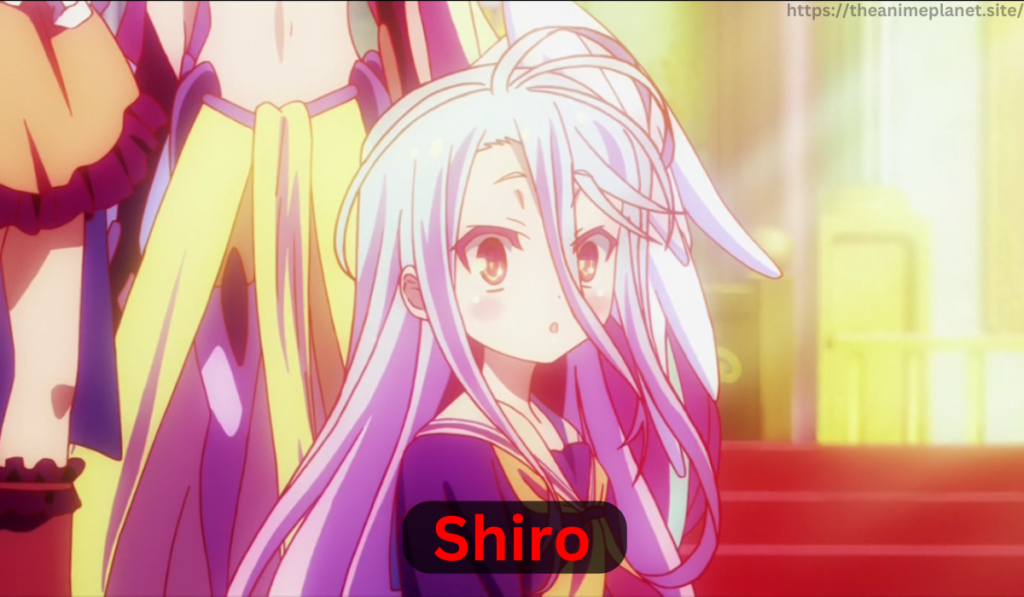
Exploring Shiro’s Emotional Complexity Despite her brilliance, Shiro is emotionally distant and often relies on her brother for emotional support and guidance. Her cold demeanor masks her vulnerability, as she struggles with the idea of needing someone else to complete her. Throughout the series, Shiro’s relationship with Sora becomes more central, as she learns to confront her own emotions and step out from the shadows of her brother’s overwhelming presence. Shiro’s emotional development is subtle but impactful, highlighting the complexity of human relationships even in a high-stakes, fantastical setting.
Shiro’s Role in Subverting Expectations Shiro is a prime example of an anime character who challenges expectations. While many anime characters are portrayed as physically strong or emotionally driven, Shiro’s strength lies in her mind. She exemplifies the theme that intellect and emotional vulnerability can be just as powerful as physical strength. Her reliance on her brother and the tension that arises from their sibling dynamic provide a fresh take on the notion of teamwork and loyalty in anime.
Cultural Impact Shiro’s character represents the power of intellect and the unique way in which emotional vulnerability can be portrayed in anime. Her role in No Game No Life pushes the boundaries of traditional character development, focusing on the mental and emotional challenges faced by a young genius who navigates a complex world alongside her equally brilliant but emotionally driven brother.
13. Nina Einstein – Code Geass
Introduction to Nina’s Character Arc Nina Einstein begins Code Geass as a quiet, shy, and somewhat innocent character. She is a brilliant but socially awkward student at Ashford Academy, and while she initially seems to be a secondary character, her development throughout the series becomes one of the most complex and intense. Nina’s journey takes a dark turn as she becomes obsessed with Lelouch and the events surrounding the rebellion, culminating in her tragic transformation into a more volatile and unstable character.
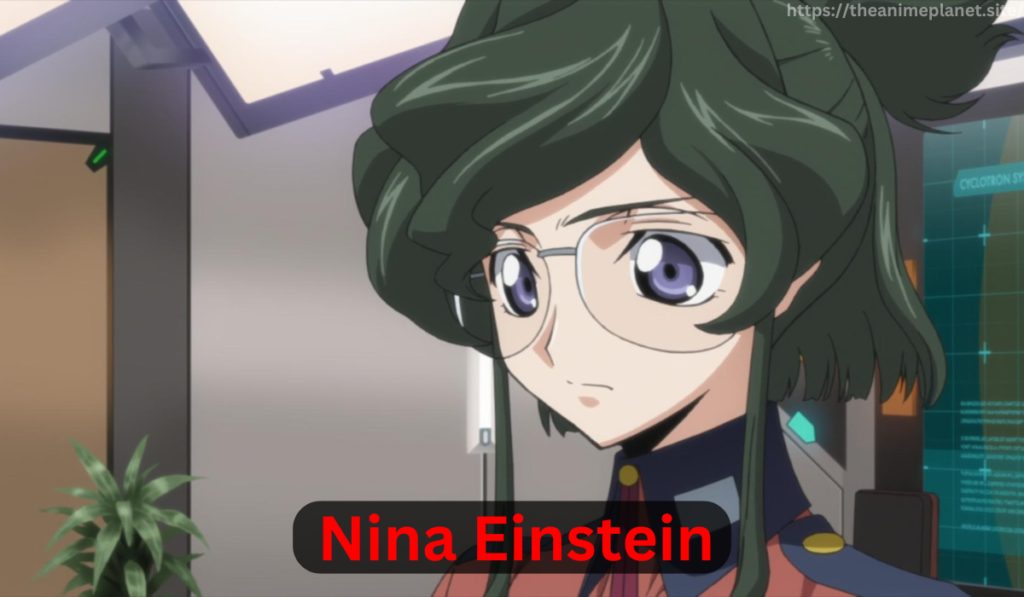
The Evolution of Nina’s Obsession and Tragedy Nina’s development is one of obsession, trauma, and eventual despair. Her transformation is spurred by the loss of her classmates and the destruction brought about by the war. Nina’s emotional instability grows as she tries to make sense of the chaos around her, leading her to a dangerous path. Her involvement with the development of weapons of mass destruction and her increasing obsession with Lelouch result in a tragic downfall, showcasing the devastating impact of unchecked emotions and revenge.
Legacy of Nina’s Character Nina’s character arc is one of the most tragic in Code Geass. She represents the danger of obsession and the personal toll of the horrors of war. Through Nina, the series explores themes of trauma, emotional isolation, and the destructive power of revenge. While she is not a typical heroine, Nina’s tragic journey highlights the consequences of unprocessed grief and the emotional wreckage left in its wake.
14. Bulma – Dragon Ball Z
Bulma’s importance in Dragon Ball Z cannot be overstated. As one of the earliest female characters in the series, she starts as a self-absorbed, but brilliant inventor. Over time, Bulma becomes a key ally to Goku and the Z Fighters, contributing her intelligence and technological expertise to help save the world on numerous occasions.

Bulma is one of the few characters who evolves significantly over the course of the series. She transitions from a supporting character to a strong and resourceful individual who plays a pivotal role in the Dragon Ball universe. Her intelligence, independence, and ability to think on her feet make her a standout female protagonist in anime.
FAQ
- Who is the most popular female anime protagonist? The popularity of female anime protagonists can vary, but characters like Mikasa Ackerman (Attack on Titan), Nami (One Piece), and Bulma (Dragon Ball Z) are among the most widely recognized and celebrated.
- What makes a female protagonist in anime stand out? A female protagonist in anime stands out through her complexity, depth, emotional growth, and unique traits. Whether it’s strength, vulnerability, leadership, or personal sacrifice, the memorable ones resonate with audiences through their development and multi-dimensionality.
- How do female protagonists in anime differ from other media? Female protagonists in anime often explore deeper emotional and psychological themes, embracing both strength and vulnerability. Anime gives more room for nuanced growth, making characters like Mikasa or Homura more multifaceted compared to traditional portrayals of women in other media.
- What is the significance of emotional growth in female protagonists? Emotional growth is key in anime, often shaping characters’ arcs as they deal with loss, guilt, love, and inner turmoil. These elements elevate female protagonists from mere plot devices to characters audiences can relate to, like Homura’s transformation in Puella Magi Madoka Magica.
- Can a female protagonist be both strong and vulnerable in anime? Yes! Many anime protagonists, like Hinata Hyuga (Naruto) or Mikasa Ackerman (Attack on Titan), balance inner strength with emotional vulnerability, making their journeys feel more authentic and relatable.
- Why are female protagonists in anime often associated with fantasy or magical worlds? Anime allows for expansive world-building, and many female protagonists, like Madoka Kaname (Puella Magi Madoka Magica) or Shiro (No Game No Life), thrive in magical or fantasy settings where they can explore growth and conflict that extends beyond the limitations of reality.
- How do anime female protagonists challenge traditional gender roles? Anime often challenges gender norms by portraying female protagonists in positions of power, leadership, or combat. Characters like Erza Scarlet (Fairy Tail) or Mikasa Ackerman (Attack on Titan) break expectations and show that women can be both physically and emotionally strong.
- What role does loyalty play in female protagonists’ development? Loyalty is often a driving force in the arcs of female protagonists, where their deep emotional connections to others, like Mikasa’s loyalty to Eren or Homura’s devotion to Madoka, shape their decisions and growth.
- How do female protagonists in anime represent empowerment? Female protagonists in anime represent empowerment through their resilience, independence, and ability to overcome adversity. They often serve as role models for courage, persistence, and self-realization, seen in characters like Saber (Fate/stay night) or Erza Scarlet.
- What is the impact of female protagonists in anime on global audiences? Female protagonists in anime have helped redefine gender roles, making an international impact by promoting more diverse representations of strength, intelligence, and emotional depth.
- How do relationships impact the development of female protagonists? Relationships are pivotal in shaping many female protagonists. Whether it’s a sibling bond like that of Shiro and Sora (No Game No Life), a romantic one like Makoto and Shinji (Neon Genesis Evangelion), or a bond of friendship, these relationships influence their growth and struggles.
- How does a female protagonist’s backstory influence her actions in the story? The backstory of female protagonists often provides the emotional foundation for their decisions and motivations. Characters like Mikasa Ackerman, whose past is marked by trauma, act as protectors due to their experiences, influencing their personalities and actions in key moments.
- What makes a strong female protagonist different from a “tough” female character? A strong female protagonist is one who embodies both internal and external strength, showing emotional depth, wisdom, and growth. In contrast, a “tough” female character may rely solely on physical strength or resilience, but not necessarily have as much emotional complexity.
- Are there female protagonists in anime who are more intellectual than physical? Yes! Characters like Shiro (No Game No Life) and Nina Einstein (Code Geass) are highly intellectual protagonists whose strength lies in their strategic minds rather than physical combat prowess. These characters show that strength in anime doesn’t always come from fighting.
- What is the importance of female protagonists’ agency in anime? Agency is important in portraying female protagonists as active participants in their stories, making key decisions that impact the plot. Characters like Erza Scarlet (Fairy Tail) and Homura Akemi (Puella Magi Madoka Magica) take charge of their own destinies, adding empowerment to their roles.
- Can female protagonists in anime also embody flaws? Absolutely! Many female protagonists have flaws that make them more relatable and human. For instance, Saber (Fate/stay night) struggles with regret and a sense of failure, while Homura (Puella Magi Madoka Magica) battles emotional detachment and obsessive tendencies.
- What are the common challenges faced by female protagonists in anime? Female protagonists often face challenges such as emotional trauma, personal loss, internal conflicts, and the burden of responsibility. These struggles help them grow emotionally and mentally, with characters like Homura (Puella Magi Madoka Magica) and Mikasa (Attack on Titan) showing the strength to overcome personal battles.
- How do female protagonists in anime contribute to plot development? Female protagonists are often central to the plot, driving the story forward through their decisions, relationships, and growth. Their actions have a significant impact on the outcome of the series, such as Saber’s leadership in Fate/stay night or Madoka’s choices in Puella Magi Madoka Magica.
- Are there any female protagonists who break the “damsel in distress” trope? Many female protagonists in anime completely break the “damsel in distress” trope by taking control of their own fate. Characters like Nami (One Piece), Mikasa (Attack on Titan), and Asuka (Neon Genesis Evangelion) challenge traditional passive roles, embodying strength, independence, and determination.
- How do female protagonists in anime address the theme of self-discovery? Self-discovery is a recurring theme for many female protagonists in anime. Characters like Madoka Kaname (Puella Magi Madoka Magica) or Saber (Fate/stay night) embark on journeys that force them to examine their identities, strengths, and inner conflicts, leading to powerful personal growth.
- How does the animation style affect the portrayal of female protagonists? The animation style can enhance the depth and personality of female protagonists. The distinctive designs and color palettes often reflect their emotional states or personal growth. For instance, the elegant and regal style of Saber in Fate/stay night reinforces her noble identity, while the bright, colorful designs of characters like Sailor Moon emphasize optimism and hope.
- How do female protagonists in anime relate to themes of love and sacrifice? Love and sacrifice are central to the development of many female protagonists. Characters like Homura (Puella Magi Madoka Magica) sacrifice their personal happiness for those they love, while others, like Mikasa (Attack on Titan) or Nami (One Piece), show that love can be both a source of strength and emotional conflict.
- Are there any examples of non-traditional female protagonists in anime? Yes, there are non-traditional female protagonists, such as Nina Einstein (Code Geass), who starts off as a shy, intellectual character but eventually plays a significant role in the darker, more political aspects of the plot. Characters like Shiro (No Game No Life) break traditional gender roles by prioritizing intellect and strategy over physical strength.
- What role do female antagonists play in anime compared to protagonists? Female antagonists in anime often serve to challenge the protagonist’s ideals and goals. They tend to be just as complex as protagonists, and many of them are driven by powerful motives such as revenge, love, or ambition. Characters like Esdeath (Akame ga Kill!) and Homura (Puella Magi Madoka Magica) illustrate how antagonistic female characters are as influential and multidimensional as their heroic counterparts.
- How have female protagonists in anime evolved over time? Female protagonists in anime have evolved significantly over time, with early portrayals often focusing on traditional roles of femininity or romantic subplots. Over the years, more diverse and complex female characters have emerged, like Mikasa Ackerman (Attack on Titan), who exemplifies physical and emotional strength, or Saber (Fate/stay night), who challenges leadership expectations and embodies noble ideals. Today, female protagonists are often portrayed with a combination of inner strength, intelligence, and emotional depth, reflecting changing views on gender roles and empowerment in media.
Conclusion
The strength of female protagonists in anime goes far beyond the traditional tropes of damsels in distress or sidekicks. Characters like Mikasa Ackerman, Homura Akemi, Saber, and many others prove that female characters can be just as complex, powerful, and emotionally rich as their male counterparts. These protagonists reflect the diverse ways in which anime explores themes of strength, loyalty, sacrifice, and personal growth.
By delving deep into the emotional lives of these characters, anime provides a unique and empowering space for female characters to shine. Their influence not only impacts their respective series but also sets the stage for future characters, inspiring creators to break boundaries and tell stories that resonate with a global audience.
As anime continues to evolve, the role of female protagonists will undoubtedly continue to expand, reflecting the growing desire for complex, multifaceted female characters. These heroines have proven that anime is not just a space for action and adventure, but also a platform for exploring the deepest aspects of human emotion and development.



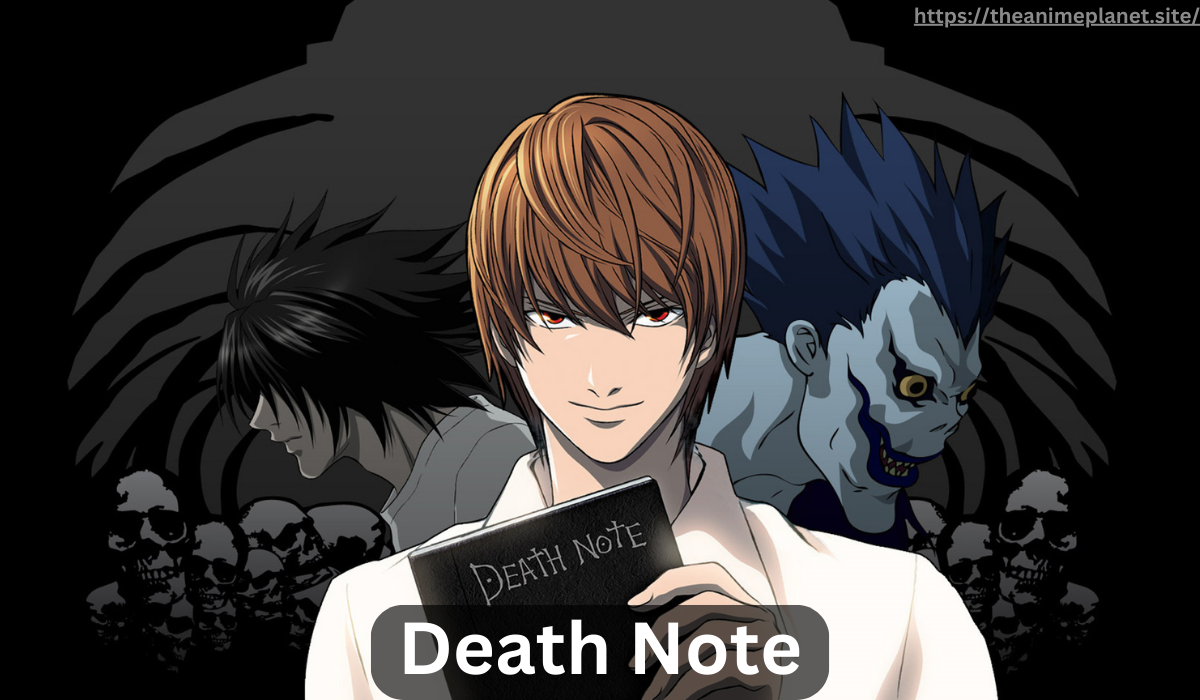
good